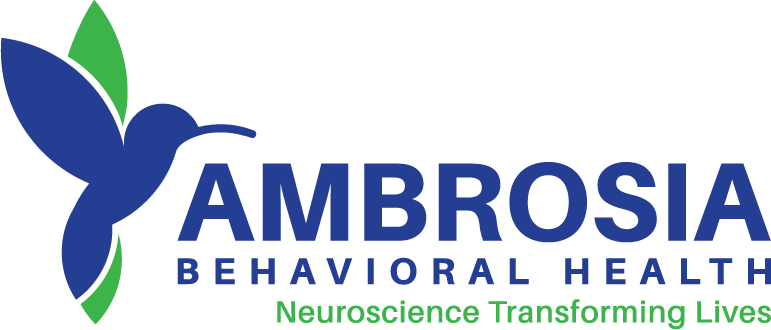While depression is often looked at as simply being sad or feeling down for a period of time, there is much more that characterizes this type of mood disorder. In fact, there are several types of depression that a person can experience depending on factors such as genetics and environment.
What are the Types of Depression?
It is reported that about 5% of the world’s population has depression. Next to anxiety disorders, depressive disorders are the most common mental health conditions in the United States. When depression of any kind is occurring, it can deeply impact one’s physical, mental, and emotional well-being. It is important to understand that depression is complex and that there are many types of depression, ranging from traditional major depressive disorder to more specific depressive disorders like premenstrual dysphoric disorder.
Major Depressive Disorder
Major depressive disorder is also known as clinical depression or simply depression. The most common symptoms associated with major depressive disorder include depressed mood and loss of interest in things once enjoyed. Additional symptoms of major depressive disorder include, but are not limited to, the following:
- Problems sleeping (either sleeping too much or not enough)
- Changes in weight
- Fatigue
- Feelings of worthlessness and hopelessness
- Difficulty concentrating
- Suicidal thoughts
Bipolar Depression
Bipolar depression, which is commonly referred to as bipolar disorder, is one of the leading types of depression people experience. There are three types of bipolar depression:
- Bipolar I – causes manic-depressive symptoms but does not always occur with psychotic episodes.
- Bipolar II – produces depressive and manic episodes that alternate but are less severe.
- Cyclothymic Disorder – causes brief episodes of both depression and hypomania.
The symptoms that someone with bipolar disorder experiences depend on the specific type of bipolar disorder they have. Some symptoms indicative of one or more of these types include the following:
- Jumpy mood
- Excessive talking
- Decreased need for sleep
- Exaggerated sense of self-confidence
- Racing thoughts
- Difficulty making decisions
- Feeling empty
- Excessive tearfulness
- Irritability
- Loss of interest in things previously enjoyed
- Problems sleeping
- Feelings of worthlessness
- Loss of energy
Postpartum Depression
Postpartum depression is a type of depression that only impacts women after they give birth. This occurs as a result of hormonal shifts that take place once the baby/babies have been born. Experiencing a hormonal shift after giving birth is normal, however for some women, it triggers more serious effects, which can be indicative of postpartum depression.
The symptoms that are associated with postpartum depression last longer than two weeks after giving birth and can consist of the following:
- Severe mood swings
- Problems bonding with the baby
- Inability to sleep or oversleeping
- Crying excessively
- Irritability
- Changes in appetite
- Thoughts of harming oneself or the baby
- Thoughts of suicide
- Problems thinking clearly
- Hopelessness
- Panic attacks
Seasonal Affective Disorder (SAD)
Those who develop SAD do so when the seasons change. Typically, SAD occurs during the winter months, where sunlight is less and the air is much colder. In some instances, however, SAD can develop in those who live in extremely hot climates where the overall temperature is not cool for long enough to enjoy. Symptoms of SAD include:
- Feeling sad almost every day
- Having low energy
- Losing interest in previously enjoyed activities
- Feeling worthless or hopeless
- Sleeping or eating too much
- Experiencing suicidal thoughts
Persistent Depressive Disorder
Also known as dysthymia, persistent depressive disorder is a type of long-term depression. Persistent depressive disorder can continue on for months or years and create a number of upsetting issues across all areas of one’s life. Symptoms of this type of depression include, but are not limited to, the following:
- Poor appetite
- Loss of interest in activities
- Lack of energy
- Irritability
- Low self-esteem or sense of self-worth
- Feelings of guilt or worry
- Avoiding social activities
- Sleep problems
- Lessened productivity
Premenstrual Dysphoric Disorder
Premenstrual dysphoric disorder, or PMDD, occurs in women prior to them having their monthly period. Symptoms usually begin within the week prior to a woman’s period beginning and then lessen a few days after it starts. Some of the symptoms that are associated with PMDD include the following:
- Nervousness
- Irritability
- Agitation
- Problems concentrating
- Feeling depressed
- Forgetfulness
- Emotional sensitivity
- Paranoia
- Severe fatigue
- Confusion
- Trouble sleeping
Women with premenstrual dysphoric disorder can also experience physical symptoms such as:
- Nausea
- Vomiting
- Constipation
- Abdominal cramps
- Headaches
- Backaches
- Dizziness
- Fainting
- Skin problems
Atypical Depression
Atypical depression is one of the types of depression that does not have as many negative effects as other types do. This is because atypical depression can be alleviated with positive experiences. Symptoms of atypical depression include the following:
- Depression that is temporary and can be relieved with good news or events
- Sleeping too much
- Heavy feeling in arms or legs that last more than one hour each day
- Sensitivity to criticism
- Increased appetite
Thankfully, each one of these types of depression can be effectively treated so that symptoms no longer interfere with one’s life in a negative manner.
Treatment Options for Depression
Depression can be treated with the appropriate methods. At Neuroscience Research Institute in South Florida, we focus on providing evidence-based treatments that allow individuals to break free from their symptoms and start living happy, healthy lives. Some treatment services we provide include EMDR, neurofeedback, and holistic treatment, along with inpatient and outpatient treatment programs.
Depression Treatment in South Florida
Stop letting your mental illness control your life. If you are ready to get help for one or more types of depression, reach out to us right now. Call us to speak with one of our talented administrative professionals or visit our admissions page to get started today.




